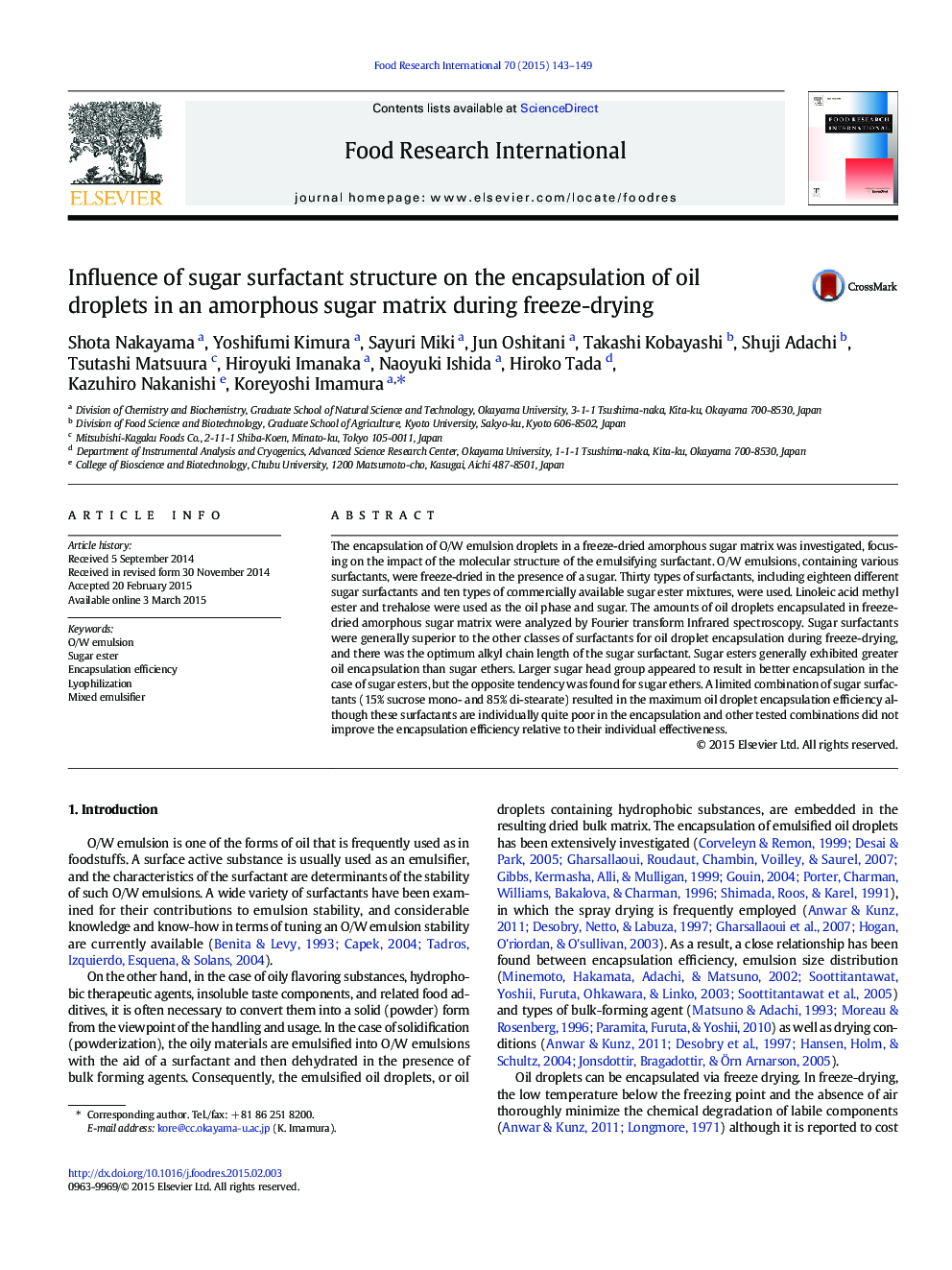| کد مقاله | کد نشریه | سال انتشار | مقاله انگلیسی | نسخه تمام متن |
|---|---|---|---|---|
| 6395520 | 1628476 | 2015 | 7 صفحه PDF | دانلود رایگان |
- O/W droplets, emulsified with various surfactants, were freeze-dried with sugar.
- Systematic comparison of oil droplet encapsulations of eighteen sugar surfactants
- There was the optimum C chain length, C14-16, of sugar surfactant for encapsulation.
- Larger volume and less OH groups of sugar head group exhibited better encapsulation.
- Oil droplet encapsulation was maximized by limited combinations of sugar surfactants.
The encapsulation of O/W emulsion droplets in a freeze-dried amorphous sugar matrix was investigated, focusing on the impact of the molecular structure of the emulsifying surfactant. O/W emulsions, containing various surfactants, were freeze-dried in the presence of a sugar. Thirty types of surfactants, including eighteen different sugar surfactants and ten types of commercially available sugar ester mixtures, were used. Linoleic acid methyl ester and trehalose were used as the oil phase and sugar. The amounts of oil droplets encapsulated in freeze-dried amorphous sugar matrix were analyzed by Fourier transform Infrared spectroscopy. Sugar surfactants were generally superior to the other classes of surfactants for oil droplet encapsulation during freeze-drying, and there was the optimum alkyl chain length of the sugar surfactant. Sugar esters generally exhibited greater oil encapsulation than sugar ethers. Larger sugar head group appeared to result in better encapsulation in the case of sugar esters, but the opposite tendency was found for sugar ethers. A limited combination of sugar surfactants (15% sucrose mono- and 85% di-stearate) resulted in the maximum oil droplet encapsulation efficiency although these surfactants are individually quite poor in the encapsulation and other tested combinations did not improve the encapsulation efficiency relative to their individual effectiveness.
Journal: Food Research International - Volume 70, April 2015, Pages 143-149
